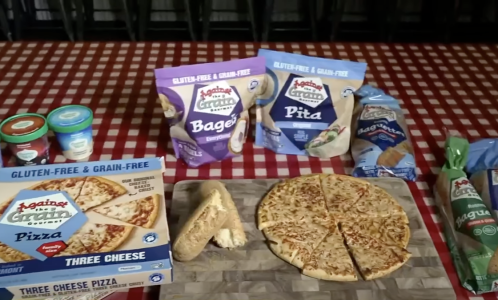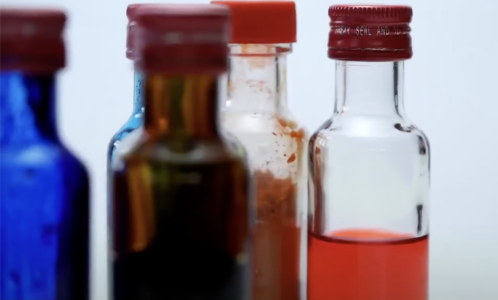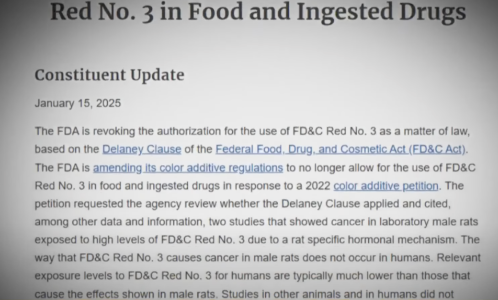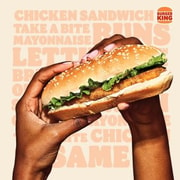Popular foods could look very different soon—RFK Jr’s FDA cracks down on this ingredient
- Replies 2
In an era where the term “clean eating” has become more than just a buzzword, it's become increasingly clear that what we put into our bodies matters.
For decades, the vibrant hues of our favorite snacks and drinks have been achieved not by nature's palette, but by a cocktail of artificial food dyes.
However, a groundbreaking shift is on the horizon, and it's led by none other than RFK Jr's FDA. The GrayVine is here to unpack the details of this monumental change and what it means for your dinner plate.
The Colorful Controversy: Understanding the FDA's Bold Move
The FDA, under the guidance of Commissioner Dr. Marty Makary, has announced a decisive plan to phase out eight artificial food dyes from the American food supply within the next two years.
This decision is not just a win for advocates of natural ingredients but a potential turning point for public health, as it frees the children from the “toxic soup” that makes up much of America’s food supply, according to Dr. Makary.
Dr. Makary's announcement echoes concerns raised by a pivotal review in The Lancet, which linked artificial food dyes to hyperactivity in children.
The question posed by Dr. Makary, “So why are we taking a gamble?”

The Dyes to Say Goodbye To
The Trump administration plans to introduce a roadmap for food manufacturers to gradually eliminate artificial dyes like Red 40, Yellow 5, Yellow 6, Blue 1, Blue 2, and Green 3 by the end of 2026. Companies will be expected to replace these with natural alternatives, which must first be reviewed and approved by the FDA.
“For companies that are currently using petroleum based red dye, try watermelon juice or beet juice,” Makary advised, holding up small bottles of juice during his remarks. “For companies currently combining petroleum-based yellow chemical and red dyes together, try carrot juice.”
The proposal also includes rescinding approval for two less commonly used dyes—citrus red 2 and orange B.
RFK Jr hinted that more changes could be on the way, telling the audience, “We’re going to get rid of the dyes and we’re going to get rid of every ingredient and additive in food that we can legally address. And for those ingredients we can't ban legally, we're going to start informing Americans about what they're eating.”
Also read: Is your favorite food banned? The truth about the ingredient behind these recent bans
The Road Ahead: Challenges and Changes
The initiative also involves partnering with the National Institutes of Health (NIH) to investigate how artificial food dyes affect children’s health and development.
This updated timeline comes after a recent meeting in which Kennedy encouraged food industry leaders to phase out artificial dyes before his term concludes in 2028.
Although the FDA hasn’t finalized any official agreements with food companies to implement these changes, the agency reportedly has “an understanding” with industry stakeholders. However, it has yet to present a concrete roadmap for how these goals will be met.
Dr. Makary emphasized, “This is not a silver bullet that will immediately make America’s children more healthy,” but added that the administration is “not interested in going down the same old path while watching America’s children get sicker.”

At present, the FDA permits 36 food color additives, including eight synthetic dyes.
The agency now plans to accelerate the removal of Red 3 from the food supply, moving faster than the previous 2027 phase-out date set by the Biden administration. (Drug manufacturers have until 2028 to eliminate it from medications.)
The artificial dyes targeted by Kennedy are commonly used in many American food products. In contrast, countries like Canada and members of the European Union—where synthetic colors must carry warning labels—typically rely on natural alternatives.
Meanwhile, states such as California and West Virginia have taken independent steps, recently passing legislation to ban synthetic food dyes and other additives from school meals and, in some cases, the broader food market.
You might like: This could change what you eat—State targets 9 cancer-causing ingredients
A New Dawn for Natural Colors
RFK Jr. declared, “Four years from now we're going to have most of these products off the market or you will know about them when you go to the grocery store.”
To support this goal, the FDA plans to expedite the approval process for natural food coloring alternatives, including calcium phosphate, galdieria extract blue, and gardenia blue.
Increasing transparency in the food industry is a key objective for Kennedy, although food manufacturers have not yet responded to or agreed to these proposed changes.
A longtime critic of the processed food industry, Kennedy has blamed the widespread presence of additives and ultra-processed ingredients for the nation’s “chronic disease epidemic.”

“All of these industries have cast a dark shadow historically over this agency, and there are so many conflicts that we are now systematically eliminating,” he said. “That has allowed them to suppress the science. There’s shockingly few studies, even on food dyes.”
Kennedy pledged that products containing artificial colors will feature clear labeling, and added that companies refusing to comply may see warning labels added to their packaging to alert consumers.
This step would require approval from Congress. But since major corporations like PepsiCo, Kraft Heinz, Nestlé USA, and Tyson Foods are notable Republican donors, it's uncertain whether lawmakers would risk damaging those financial ties.
The announcement received enthusiastic support from a group of mothers and their children seated nearby onstage. Known as the “MAHA moms,” they are some of Kennedy’s most passionate backers.
Source: FOX 5 New York / Youtube.
The Science Behind the Decision
Among them is food activist and blogger Vani Hari, who—like many others—believes major food companies have misled the public by quietly including potentially harmful additives in everyday products.
Dr. Makary added, “Always listen to the mom,” sharing that it’s one of the most important lessons he’s learned in medicine.
Red 40 is among the dyes containing benzidine—a known human and animal carcinogen—which is allowed in small, supposedly safe amounts.
Back in 1985, the FDA determined that exposure to free benzidine in food dyes posed a cancer risk just under its official “concern” threshold: 1 in 1 million.

Regular consumption of Red 40 and similar dyes has also been associated with increased hyperactivity in some children, both with and without ADHD. Research suggests that these dyes can worsen symptoms or trigger behavioral changes.
Canadian researchers have found that Red 40, also called Allura red, may interfere with the body’s ability to absorb nutrients, water, and electrolytes in the gut — potentially increasing the risk for inflammatory bowel diseases.
This weakening of the gut barrier could raise susceptibility to conditions like Crohn’s disease and ulcerative colitis.
Meanwhile, Blue 1 — commonly found in sweets like gummy bears — has also been linked to inattention and hyperactivity in children.
Source: TODAY / Youtube.
In Europe, many food dyes are either banned outright or must carry warning labels — a result of stricter oversight from food and drug regulators compared to their U.S. counterparts.
Unlike European authorities, who typically assess ingredients and formulations before a product hits the market, American regulators generally respond after issues arise.
Following Tuesday’s announcement, it remains unclear what specific steps the U.S. government will take to enforce the proposed changes.
Dr. Makary commented, “There are a number of tools at our disposal.”
“I believe in love, let’s start in a friendly way and see if we can do this without any statutory or regulatory changes, but we are exploring every tool in the toolbox to make sure this gets done very quickly. And they want to do it — so why go down a complicated road with Congress?”
Read next: Are your snacks safe? Shocking details you need to know from the latest FDA high-risk recall

Are you concerned about artificial dyes in your food? Have you noticed any health changes after consuming natural versus artificial colors? Or perhaps you have insights on how to navigate this transition in your own kitchen? Share your thoughts in the comments below!
For decades, the vibrant hues of our favorite snacks and drinks have been achieved not by nature's palette, but by a cocktail of artificial food dyes.
However, a groundbreaking shift is on the horizon, and it's led by none other than RFK Jr's FDA. The GrayVine is here to unpack the details of this monumental change and what it means for your dinner plate.
The Colorful Controversy: Understanding the FDA's Bold Move
The FDA, under the guidance of Commissioner Dr. Marty Makary, has announced a decisive plan to phase out eight artificial food dyes from the American food supply within the next two years.
This decision is not just a win for advocates of natural ingredients but a potential turning point for public health, as it frees the children from the “toxic soup” that makes up much of America’s food supply, according to Dr. Makary.
Dr. Makary's announcement echoes concerns raised by a pivotal review in The Lancet, which linked artificial food dyes to hyperactivity in children.
The question posed by Dr. Makary, “So why are we taking a gamble?”

FDA Commissioner Dr. Marty Makary announced the plan to phase out the use of eight artificial food dyes from the US food supply within two years. Image source: TODAY / Youtube.
The Dyes to Say Goodbye To
The Trump administration plans to introduce a roadmap for food manufacturers to gradually eliminate artificial dyes like Red 40, Yellow 5, Yellow 6, Blue 1, Blue 2, and Green 3 by the end of 2026. Companies will be expected to replace these with natural alternatives, which must first be reviewed and approved by the FDA.
“For companies that are currently using petroleum based red dye, try watermelon juice or beet juice,” Makary advised, holding up small bottles of juice during his remarks. “For companies currently combining petroleum-based yellow chemical and red dyes together, try carrot juice.”
The proposal also includes rescinding approval for two less commonly used dyes—citrus red 2 and orange B.
RFK Jr hinted that more changes could be on the way, telling the audience, “We’re going to get rid of the dyes and we’re going to get rid of every ingredient and additive in food that we can legally address. And for those ingredients we can't ban legally, we're going to start informing Americans about what they're eating.”
Also read: Is your favorite food banned? The truth about the ingredient behind these recent bans
The Road Ahead: Challenges and Changes
The initiative also involves partnering with the National Institutes of Health (NIH) to investigate how artificial food dyes affect children’s health and development.
This updated timeline comes after a recent meeting in which Kennedy encouraged food industry leaders to phase out artificial dyes before his term concludes in 2028.
Although the FDA hasn’t finalized any official agreements with food companies to implement these changes, the agency reportedly has “an understanding” with industry stakeholders. However, it has yet to present a concrete roadmap for how these goals will be met.
Dr. Makary emphasized, “This is not a silver bullet that will immediately make America’s children more healthy,” but added that the administration is “not interested in going down the same old path while watching America’s children get sicker.”

This move aims to protect children from the potential harm caused by these dyes, which have been linked to hyperactivity and other health issues. Image source: TODAY / Youtube.
At present, the FDA permits 36 food color additives, including eight synthetic dyes.
The agency now plans to accelerate the removal of Red 3 from the food supply, moving faster than the previous 2027 phase-out date set by the Biden administration. (Drug manufacturers have until 2028 to eliminate it from medications.)
The artificial dyes targeted by Kennedy are commonly used in many American food products. In contrast, countries like Canada and members of the European Union—where synthetic colors must carry warning labels—typically rely on natural alternatives.
Meanwhile, states such as California and West Virginia have taken independent steps, recently passing legislation to ban synthetic food dyes and other additives from school meals and, in some cases, the broader food market.
You might like: This could change what you eat—State targets 9 cancer-causing ingredients
A New Dawn for Natural Colors
RFK Jr. declared, “Four years from now we're going to have most of these products off the market or you will know about them when you go to the grocery store.”
To support this goal, the FDA plans to expedite the approval process for natural food coloring alternatives, including calcium phosphate, galdieria extract blue, and gardenia blue.
Increasing transparency in the food industry is a key objective for Kennedy, although food manufacturers have not yet responded to or agreed to these proposed changes.
A longtime critic of the processed food industry, Kennedy has blamed the widespread presence of additives and ultra-processed ingredients for the nation’s “chronic disease epidemic.”

The FDA will fast-track the approval of natural alternatives to these artificial dyes and push for transparency in food labelling. Image source: TODAY / Youtube.
“All of these industries have cast a dark shadow historically over this agency, and there are so many conflicts that we are now systematically eliminating,” he said. “That has allowed them to suppress the science. There’s shockingly few studies, even on food dyes.”
Kennedy pledged that products containing artificial colors will feature clear labeling, and added that companies refusing to comply may see warning labels added to their packaging to alert consumers.
This step would require approval from Congress. But since major corporations like PepsiCo, Kraft Heinz, Nestlé USA, and Tyson Foods are notable Republican donors, it's uncertain whether lawmakers would risk damaging those financial ties.
The announcement received enthusiastic support from a group of mothers and their children seated nearby onstage. Known as the “MAHA moms,” they are some of Kennedy’s most passionate backers.
Source: FOX 5 New York / Youtube.
The Science Behind the Decision
Among them is food activist and blogger Vani Hari, who—like many others—believes major food companies have misled the public by quietly including potentially harmful additives in everyday products.
Dr. Makary added, “Always listen to the mom,” sharing that it’s one of the most important lessons he’s learned in medicine.
Red 40 is among the dyes containing benzidine—a known human and animal carcinogen—which is allowed in small, supposedly safe amounts.
Back in 1985, the FDA determined that exposure to free benzidine in food dyes posed a cancer risk just under its official “concern” threshold: 1 in 1 million.

Some states have already enacted laws banning certain artificial colors in school meals, and there is a push to remove or label these additives across the broader food supply. Image source: TODAY / Youtube.
Regular consumption of Red 40 and similar dyes has also been associated with increased hyperactivity in some children, both with and without ADHD. Research suggests that these dyes can worsen symptoms or trigger behavioral changes.
Canadian researchers have found that Red 40, also called Allura red, may interfere with the body’s ability to absorb nutrients, water, and electrolytes in the gut — potentially increasing the risk for inflammatory bowel diseases.
This weakening of the gut barrier could raise susceptibility to conditions like Crohn’s disease and ulcerative colitis.
Meanwhile, Blue 1 — commonly found in sweets like gummy bears — has also been linked to inattention and hyperactivity in children.
Source: TODAY / Youtube.
In Europe, many food dyes are either banned outright or must carry warning labels — a result of stricter oversight from food and drug regulators compared to their U.S. counterparts.
Unlike European authorities, who typically assess ingredients and formulations before a product hits the market, American regulators generally respond after issues arise.
Following Tuesday’s announcement, it remains unclear what specific steps the U.S. government will take to enforce the proposed changes.
Dr. Makary commented, “There are a number of tools at our disposal.”
“I believe in love, let’s start in a friendly way and see if we can do this without any statutory or regulatory changes, but we are exploring every tool in the toolbox to make sure this gets done very quickly. And they want to do it — so why go down a complicated road with Congress?”
Read next: Are your snacks safe? Shocking details you need to know from the latest FDA high-risk recall
Key Takeaways
- FDA Commissioner Dr. Marty Makary announced the plan to phase out the use of eight artificial food dyes from the US food supply within two years.
- This move aims to protect children from the potential harm caused by these dyes, which have been linked to hyperactivity and other health issues.
- The FDA will fast-track the approval of natural alternatives to these artificial dyes and push for transparency in food labelling.
- Some states have already enacted laws banning certain artificial colors in school meals, and there is a push to remove or label these additives across the broader food supply.
Are you concerned about artificial dyes in your food? Have you noticed any health changes after consuming natural versus artificial colors? Or perhaps you have insights on how to navigate this transition in your own kitchen? Share your thoughts in the comments below!






